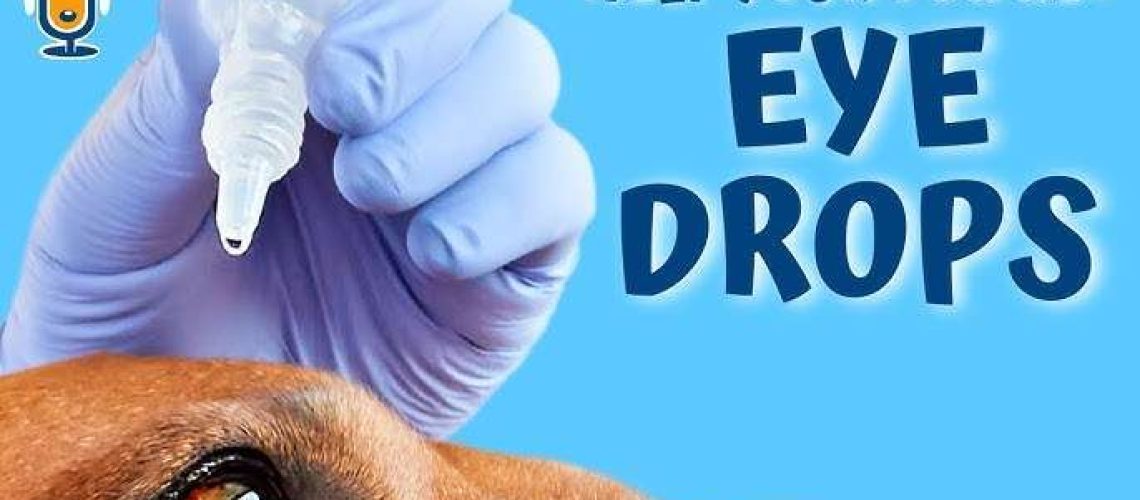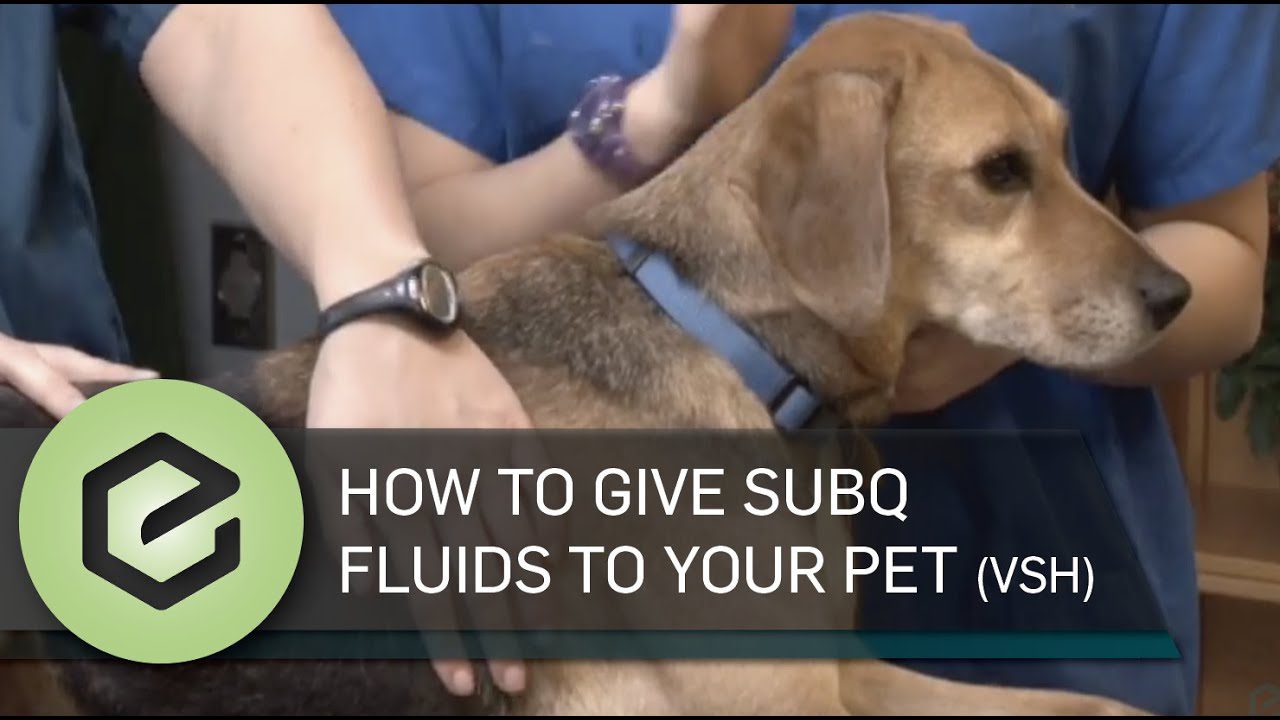Key Takeaways:
- 1. Administering eye drops to your dog can be challenging but is essential for their eye health.
- 2. Always consult with your veterinarian before starting any eye drop medication for your dog.
- 3. Properly clean and prepare your dog's eyes before applying the eye drops.
- 4. Use gentle restraint techniques to keep your dog calm during the administration process.
- 5. Reward and praise your dog after successfully giving them their eye drops to create a positive association.
Are you a proud dog owner who wants to ensure the health and well-being of your furry friend? If so, then understanding the importance of eye drops for dogs is essential. These vital medications can provide relief from discomfort and treat various eye conditions in dogs. By delving into this subject, you will discover valuable tips that can make administering eye drops to your canine companion a breeze. Whether your dog is suffering from dry eyes, an infection, or allergies, this guide will equip you with the knowledge you need to effectively care for their eyes. So, let's dive in and explore the world of eye drops for dogs together!
Why are eye drops important for dogs?
Eye drops are important for dogs because they can help treat and prevent various eye conditions. Just like humans, dogs can experience issues with their eyes, such as infections, allergies, dryness, or irritation. Eye drops contain medication that can relieve symptoms and promote healing. They are specifically formulated to be safe for use in a dog's eyes.
Using eye drops on your dog can help alleviate discomfort and prevent further complications. If left untreated, eye conditions can worsen and potentially lead to vision loss. Regular use of eye drops as prescribed by a veterinarian can help maintain your dog's eye health and ensure their overall well-being.
Benefits of using eye drops on dogs:
- Relieve pain and discomfort
- Treat infections
- Reduce inflammation
- Promote healing
- Prevent further complications
Common reasons for using eye drops on dogs:
- Bacterial or viral infections
- Allergies
- Dryness or irritation
- Foreign objects in the eyes
- Conjunctivitis (pink eye)
How to safely give eye drops to your dog?
Giving eye drops to your dog may seem challenging at first, but with some patience and practice, it can become easier. Here is a step-by-step guide on how to safely administer eye drops to your furry friend:
- The prescribed eye drop medication
- Clean tissues or cotton balls
- Treats or rewards for your dog
- Find a quiet and comfortable space to administer the eye drops.
- Gently restrain your dog if necessary, using positive reinforcement techniques.
- Have someone assist you if needed, to hold your dog steady.
- Tilt your dog's head back slightly, so their eyes are looking upward.
- Gently pull down the lower eyelid to create a small pocket.
- Squeeze the prescribed number of eye drops into the pocket without touching the dropper tip to your dog's eye or eyelid.
- Release the lower eyelid and allow your dog to blink naturally, spreading the medication across their eye.
- Immediately reward your dog with a treat and praise them for cooperating during the process.
- This positive reinforcement will help create a more pleasant experience for both you and your furry friend in future administrations.
Gather necessary supplies:
Prepare your dog:
Administer the eye drops:
Reward and praise:
If you have any concerns or difficulties giving eye drops to your dog, it is best to consult with a veterinarian who can provide further guidance and demonstrate proper technique. They may also recommend alternative methods or suggest additional treatments if necessary.
Common eye conditions in dogs that require medication
Conjunctivitis
Conjunctivitis, also known as pink eye, is a common eye condition in dogs that can be caused by allergies, infections, or irritants. It occurs when the conjunctiva, the thin membrane covering the white part of the eye and inner eyelids, becomes inflamed. Symptoms of conjunctivitis include redness, discharge from the eyes, and excessive blinking. To treat this condition, your veterinarian may prescribe antibiotic eye drops or ointments to reduce inflammation and fight off any infection.
Cataracts
Cataracts are another common eye condition in dogs that can lead to vision loss if left untreated. They occur when the lens of the eye becomes cloudy or opaque. Cataracts can be caused by genetics, diabetes, or age-related changes in the lens. Symptoms of cataracts include cloudiness in the eyes and difficulty seeing clearly. In some cases, surgery may be necessary to remove cataracts and restore vision.
Glaucoma
Glaucoma is a serious eye condition that can cause irreversible damage to your dog's eyes if not treated promptly. It occurs when there is increased pressure within the eyeball, which can damage the optic nerve and lead to vision loss. Symptoms of glaucoma include redness, pain, squinting, and enlargement of the affected eye. Treatment for glaucoma often involves using medicated eye drops to reduce intraocular pressure and protect your dog's vision.
It is important to note that these are just a few examples of common eye conditions in dogs that may require medication. If you notice any changes in your dog's eyes or suspect they may have an eye condition, it is crucial to consult with a veterinarian for proper diagnosis and treatment.
Potential side effects and risks of using eye drops on dogs
Using eye drops on dogs can be an effective way to treat various eye conditions, but it is important to be aware of the potential side effects and risks associated with their use. While most dogs tolerate eye drops well, some may experience mild discomfort or irritation upon application. It is essential to follow your veterinarian's instructions carefully and monitor your dog for any adverse reactions.
One potential side effect of using eye drops in dogs is temporary stinging or burning sensation upon application. This can cause your dog to rub their eyes or try to paw at them, which can further irritate the eyes. If you notice excessive rubbing or discomfort, it is important to consult with your veterinarian.
Another risk associated with using eye drops on dogs is the possibility of an allergic reaction. Some dogs may be sensitive or allergic to certain ingredients in the eye drops, leading to redness, swelling, or itching. If you observe any signs of an allergic reaction, discontinue use immediately and seek veterinary advice.
To minimize the risk of side effects and ensure proper administration of eye drops, it is crucial to handle your dog gently and create a calm environment during the application process. Use treats or rewards to positively reinforce your dog's cooperation and make the experience more pleasant for them.
Using human eye drops vs. dog-specific ones for your dog's eyes
When it comes to treating your dog's eyes with eye drops, it may be tempting to use human eye drops as a substitute for dog-specific ones. However, it is important to understand that there are significant differences between these two types of products.
Human eye drops are formulated specifically for human eyes and may contain ingredients that could be harmful or irritating when used on dogs. Additionally, the pH level and concentration of active ingredients in human eye drops may not be suitable for canine eyes.
On the other hand, dog-specific eye drops are specifically designed to meet the needs of dogs and their unique eye conditions. These products are formulated with ingredients that are safe and effective for dogs, helping to alleviate symptoms and promote healing.
To ensure the best possible care for your dog's eyes, it is always recommended to use eye drops that are specifically made for dogs. Consult with your veterinarian to determine the most appropriate eye drops for your dog's specific condition.
Tips and tricks for successfully giving your dog their eye drops
Administering eye drops to your dog can be a challenging task, but with some patience and practice, you can make the process easier for both you and your furry friend. Here are some tips and tricks to help you successfully give your dog their eye drops:
1. Prepare in advance: Before starting the application process, gather all the necessary supplies such as the prescribed eye drops, clean tissues or cotton balls, and treats as rewards.
2. Create a calm environment: Find a quiet area where you can comfortably administer the eye drops without distractions. Reducing noise and other stimuli can help keep your dog relaxed during the process.
3. Get assistance if needed: If your dog tends to be uncooperative or anxious during eye drop administration, consider asking someone else to hold them gently while you apply the drops. This will help ensure safety and accuracy.
4. Use positive reinforcement: Reward your dog with treats or praise before, during, and after administering the eye drops. This positive association can make future administrations easier.
5. Proper restraint technique: Gently restrain your dog by holding their head steady but not forcefully. Avoid applying excessive pressure on their eyes or causing discomfort.
6. Administering the drops: Tilt your dog's head slightly backward and use one hand to hold their upper eyelid open while using the other hand to carefully instill the prescribed number of drops into the lower eyelid. Avoid touching the dropper tip to your dog's eye or any other surface to prevent contamination.
7. Massage the eye: After instilling the drops, gently massage the area around your dog's eye for a few seconds. This helps distribute the medication and ensures proper absorption.
Remember, practice makes perfect. With time, both you and your dog will become more comfortable with the process of administering eye drops. If you encounter any difficulties or have concerns, don't hesitate to reach out to your veterinarian for guidance and support.
In conclusion, giving eye drops to your dog can be challenging but with patience and practice, it can become easier. Remember to follow the instructions from your veterinarian and use gentle techniques to ensure your dog receives the vital medication they need for their eye health.
How to hold down an aggressive dog when you need to give eye drops?
Get assistance from another person. To keep a dog in a prone position, place your arm and upper body over the dog's shoulders. Use your other hand to hold the head and lift it upwards, allowing for easy access to the eye. The person applying the drops should stand on the opposite side of the eye being treated.
Is there an alternative to dog eye drops?
Depending on your dog's condition, your vet may suggest using topical eye ointments instead of eye drops.
How do vets calm aggressive dogs?
When dogs wear a muzzle, they tend to be more calm and the owners also feel more at ease, making the examination process go smoothly. However, if the muzzle is taken off, sedatives or anxiety medications may be used instead. Some patients are given a dose of trazodone before visiting the veterinarian.
How to give dogs eye drops reddit?
This technique is based on the idea of compression, where both humans and animals feel a sense of relaxation when pressure is applied to their chest. In this method, either you or someone else can gently squeeze the eyedrops onto the dog's eyes from a few inches above, and the dog will not be aware of it.
How can I treat my dogs eye infection at home without a vet prescription?
If your dog is willing, you can gently flush their eye with saline solution. You can find pure saline at drugstores and pharmacies, and it should provide a pain-free and irritation-free flushing experience.
What eye drops are good for cherry eye in dogs?
Therefore, we suggest starting with Maxidex pure steroid solution or drops if massage alone does not yield significant results. If both massage and drops are used, the cherry eye should ideally improve within 2-3 days.
















